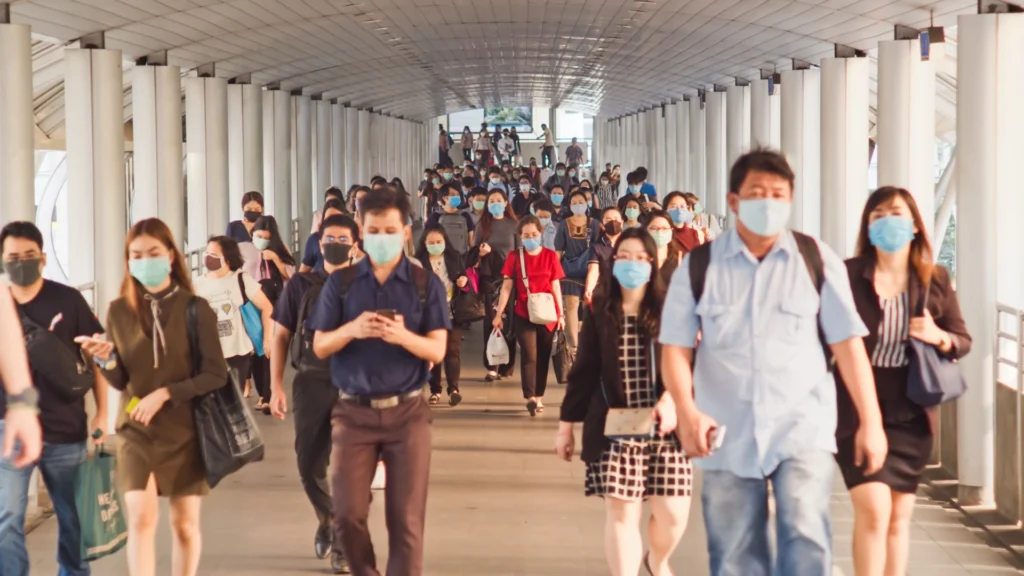
If there’s one thing COVID-19 taught us, it’s that healthcare systems—no matter how advanced—can be overwhelmed in a matter of weeks. Across the globe, hospitals were strained, frontliners exhausted, and essential services disrupted. Malaysia was no exception.
As the dust settles, one thing is clear: we cannot afford to be caught unprepared again.
The key to building long-term resilience lies not just in vaccines and ventilators—but in digital health infrastructure. By investing in health tech in Malaysia now, both the public and private sectors can ensure that the country is ready to respond faster, treat more efficiently, and keep healthcare accessible during the next crisis.
Whether it’s AI-powered diagnosis, national telemedicine platforms, or integrated health records, the tools are here. But the time to act is before—not during—the next wave.
Why Health Tech Investment Matters
When COVID-19 hit, some countries turned to digital health tools immediately—apps that tracked symptoms, AI that predicted case surges, and remote care platforms that kept hospitals from overflowing. In Malaysia, we saw promising initiatives like MySejahtera and increased teleconsultation services.
But many of these efforts were reactive, not proactive.
To truly be ready for the next health emergency, Malaysia needs consistent pandemic preparedness funding that prioritises innovation, accessibility, and scalability.
Here’s why health tech investment in Malaysia should be a national priority:
- It ensures care continuity during lockdowns or movement restrictions
- It supports frontliners through automation and predictive systems
- It decentralises care so people in rural or underserved areas get timely help
- It speeds up diagnostics and improves treatment outcomes
- It builds public trust through transparency and communication
Key Areas That Need Investment Now
So, where should Malaysia focus its resources? Let’s break down the most urgent areas for digital transformation.
1. Digital Health Infrastructure
At the heart of pandemic response is connectivity—between systems, providers, and patients. Yet Malaysia’s public and private healthcare systems still operate largely in silos, with limited data-sharing or integration.
What we need:
- A national digital health infrastructure that unifies patient records
- Cloud-based platforms for hospitals and clinics to coordinate in real-time
- Secure data protocols that allow collaboration without compromising privacy
This will not only streamline pandemic response but also improve everyday care—reducing duplication, errors, and paperwork.

2. AI-Driven Healthcare
AI in healthcare in Malaysia is still in its infancy, but it holds massive potential. During a pandemic, AI can:
- Identify outbreak hotspots early
- Predict patient deterioration
- Optimise hospital resources
- Automate triage and routine queries
Imagine a chatbot trained in Bahasa Malaysia and other local dialects, able to answer basic medical questions or flag when someone’s symptoms may need escalation. Or an AI model that uses historical data to allocate ICU beds or PPE more efficiently.
These aren’t futuristic fantasies—they’re tools available today, if we choose to invest.
3. Telemedicine Expansion
One of the few bright spots during the pandemic was the rise of telehealth. Malaysians who never imagined consulting a doctor online found relief through platforms like FEV3R.
Moving forward, we need to expand this model beyond urban centres.
That means:
- Partnering with telcos to improve internet access in rural Sabah, Sarawak, and remote Peninsular communities
- Subsidising telehealth access for B40 populations
- Including telemedicine in corporate health plans and insurance coverage
- Training doctors on virtual care delivery
The telemedicine future in Malaysia is one where remote consultations become a normal part of care—not a last resort. And that future starts now.
Public-Private Partnerships Are the Way Forward
No single entity can carry the burden of pandemic preparedness alone. To succeed, Malaysia must foster strong collaboration between ministries, healthcare providers, insurers, and tech startups.
Here’s what this could look like:
- MOH grants for pilot projects in AI diagnostics and remote care
- Startup incubators focused on medtech and digital tools
- Joint ventures between public hospitals and digital platforms like FEV3R
- Tax incentives for companies that implement smart health tech in their benefits
With smart governance, pandemic preparedness funding can generate not only a healthier population but also new jobs and innovation hubs.
How FEV3R Helps Bridge the Gap
As a growing telemedicine app, FEV3R demonstrates the practical value of health tech investment in Malaysia. What began as a way to connect people to doctors during lockdowns has evolved into a powerful healthcare tool that fits the modern Malaysian lifestyle.
For RM24 per session, users can:
- Consult licensed doctors online
- Receive digital MCs and treatment plans
- Avoid clinics and crowded waiting rooms
- Make smarter decisions with health education features
By making remote healthcare accessible, FEV3R supports both everyday needs and emergency scenarios. Imagine how platforms like this could scale further with targeted funding—especially for high-risk populations or during future outbreaks.
FEV3R also complements other technologies. For example, if AI predicts a flu spike in a certain area, the app could send early alerts, recommend check-ins, and connect users to care—all without burdening local clinics.
Challenges to Overcome
While the case for investment is strong, there are still hurdles:
- Budget constraints: Health tech isn’t cheap, and economic recovery is still ongoing
- Digital literacy: Some populations, especially elderly or rural, may struggle to use digital tools
- Data security concerns: Health records are sensitive, and breaches can damage trust
- Fragmentation: Without a national digital roadmap, progress risks being siloed and inefficient
But these aren’t reasons to delay. They are reasons to act now—with urgency, strategy, and stakeholder buy-in.

What Happens If We Don’t Prepare?
Let’s be clear: the next pandemic is not a matter of “if” but “when.” Whether it’s a new strain of influenza, another coronavirus, or a zoonotic outbreak, the risk remains.
Without investment, Malaysia could again face:
- Overloaded hospitals
- Delays in diagnosis and treatment
- Lost productivity from avoidable illness
- Public panic due to poor communication
- Health inequality between urban and rural populations
The good news? We already have the blueprint. We’ve lived through the worst. Now we need to build the best possible system to ensure history doesn’t repeat itself.
A Call to Action for Leaders
To every policymaker, hospital administrator, investor, and CEO: the time to act is now.
A strong health tech investment in Malaysia means:
- Faster response times during emergencies
- Smarter, data-driven decision making
- A healthier, more empowered population
- Stronger public-private collaboration
- Long-term savings through prevention and early detection
We can’t predict the future—but we can prepare for it. And the digital tools are already in our hands.
Invest Now for a Healthier, Safer Malaysia
Want to be part of the solution? Start with platforms that are already proving their impact—like FEV3R. By supporting telemedicine in the future of Malaysia, we decentralise care, lighten the load on our hospitals, and ensure that help is never more than a tap away.
This is about more than just business or tech—it’s about the health and security of every Malaysian.
Let’s make sure we’re not just reacting to the next crisis, but ready to rise above it.






